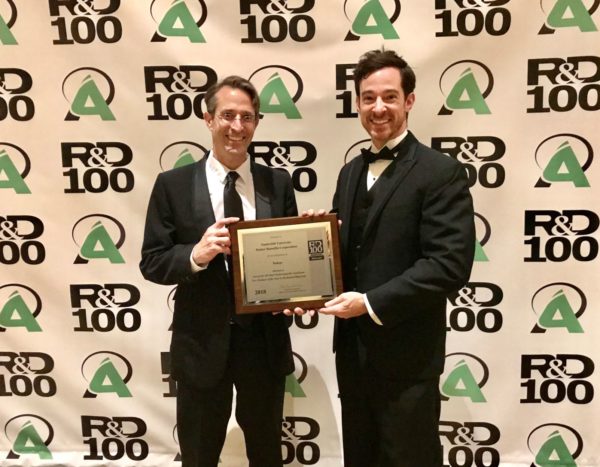The Indego exoskeleton developed at Vanderbilt University picked up an R&D 100 Award at the Nov. 16 ceremony held in Orlando, Fla.
Co-inventors Michael Goldfarb, H. Fort Flowers Professor of Mechanical Engineering, and Ryan Farris, a Vanderbilt alumnus and engineering manager at Parker Hannifin Corporation, accepted the award for Indego, whose lightweight, modular design allows paraplegic users to transport and put on the device unassisted, enabling them to walk.
The R&D 100 Awards are an international competition that recognizes the 100 most exceptional innovations in science and technology from the past year and are considered among the most globally prestigious recognitions of invention and innovation. The recent ceremony marked the 56th year for the event.

Indego is the result of an intensive, 10-year effort. The initial development was funded by a grant from the National Institute of Child Health and Human Development. In 2012, Parker Hannifin, a global leader in motion and control technologies, purchased an exclusive license to market the design and has worked closely with Goldfarb’s research group to develop a commercial version of the medical device. The U.S. Food and Drug Administration granted clearance to market and sell the powered lower-limb exoskeleton in 2016.
Goldfarb is also director of the Center for Intelligent Mechatronics at Vanderbilt and a professor of electrical engineering and physical medicine and rehabilitation. Farris is his former Ph.D. student.